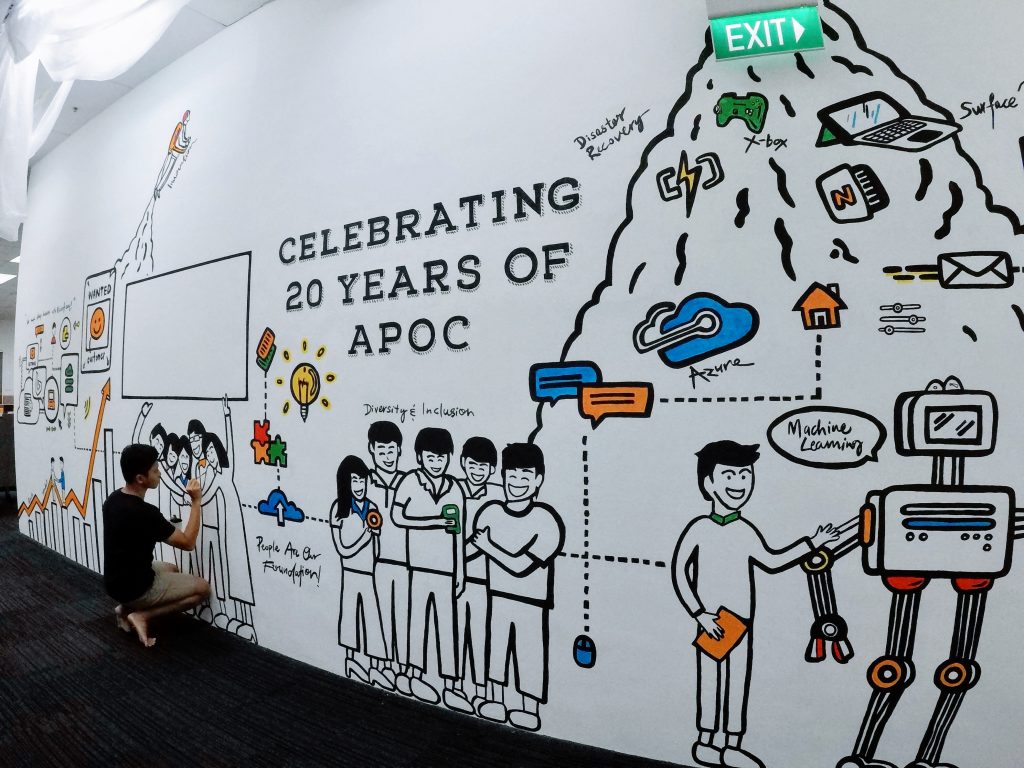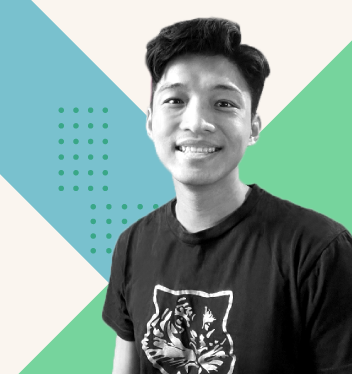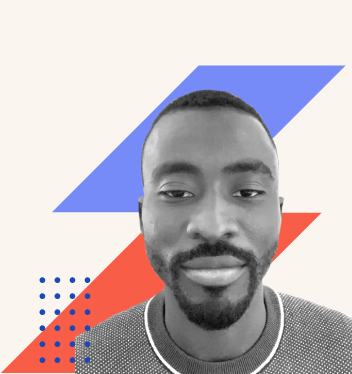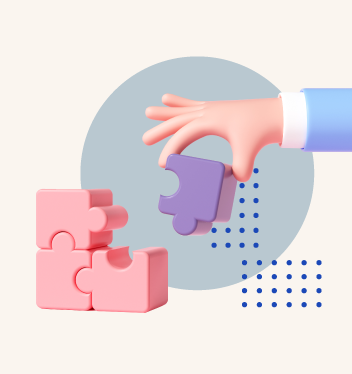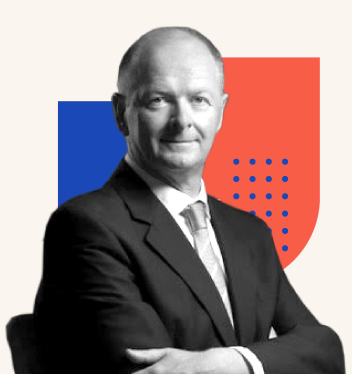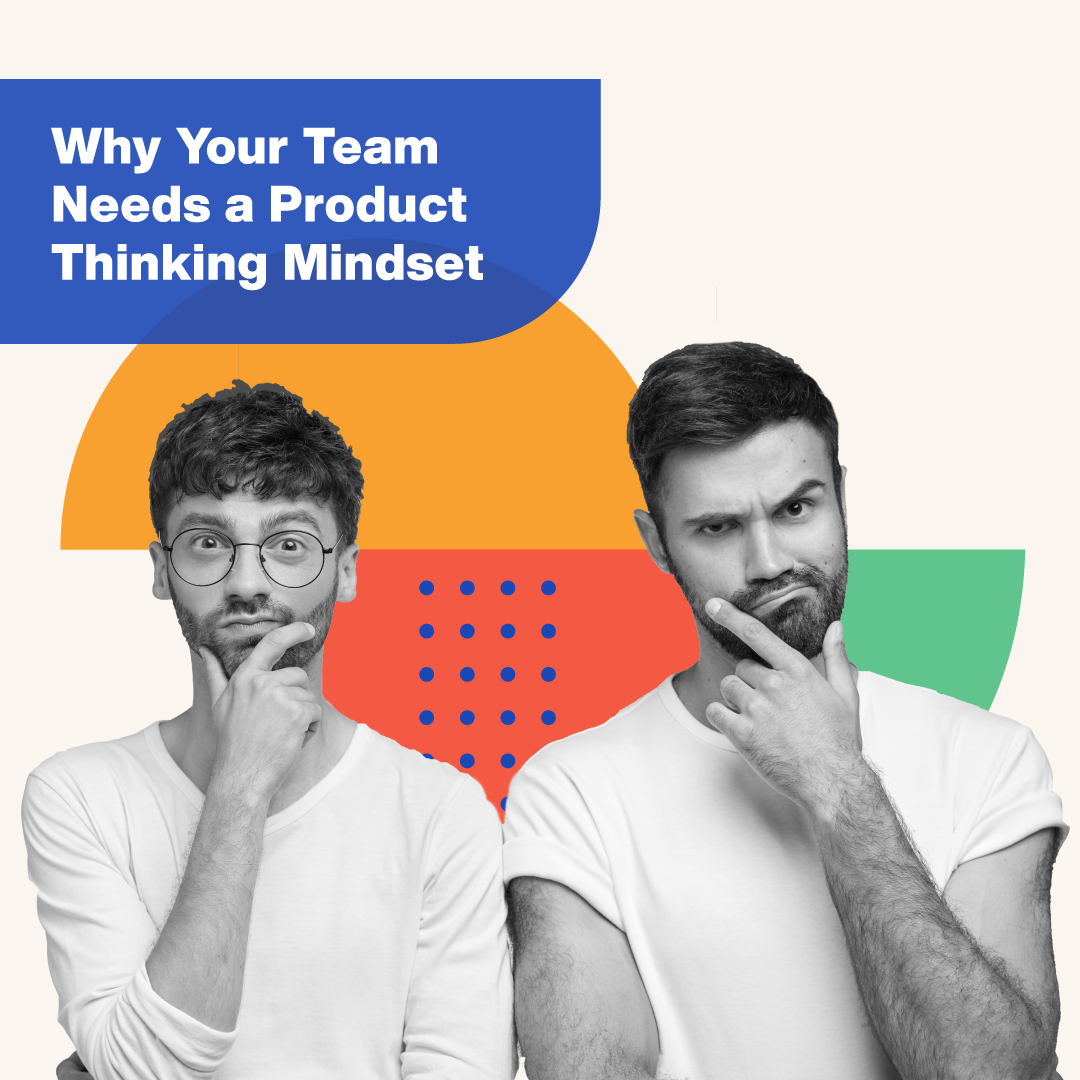Joshua Wang is UX Director and UXPM Instructor at Skills Union. He is also a toy collector and has co-founded Usual Suspects, a company creating original toys that ‘speak’ and encourage children to develop kindness and care for one another and the world. Joshua does illustration on the side and has been commissioned by clients like Microsoft to create office murals.
Josh, I’d love you to tell me a little about where you were born and raised
I was born and raised in Singapore. I’ve spent my life here – apart from the 40 days I spent in Scotland studying with my university. Even though it’s summer all year round here, and is very hot, I love the pace. It’s a way of life that suits me.
How were your school years in Singapore? Was there anything you particularly enjoyed learning?
I wouldn’t say I was a very smart kid, but I did love maths (even though I didn’t excel at it). My other favourite subject was art. I’ve loved drawing since I was very young, and I could draw anything – from dinosaurs to landscapes and portraits. However, I was diagnosed as colour-blind, which was a hurdle that I faced at a very young age.
It caused me to doubt myself. For example, I used to colour the sun green, and my classmates would laugh at me and say: “The sun is supposed to be orange or yellow.” It didn’t stop me from loving art, though, despite not feeling very good about myself. I carried on sketching, doodling, and colour shading, and I think that helped to pave my journey as a designer.
So how do you see the world? Is it in black and white, or shades of colour, or is it difficult for you to say?
Thankfully I don’t just see in black and white, I can see some colours. I often forget about the visual deficiencies I have, and that I can’t differentiate colours. I can identify primary colours, like red, green, and yellow. But when things go to shades of colours, like indigo or pink, my mind gets confused. My eyes render greens into yellows, or purples into reds.
When you were younger, did you have a sense of what you wanted to do?
Not really. I was pretty confused, but I later realized I wanted to join the airforce and become a pilot. I had to join the army for two years once I turned 18 because there is a national policy in Singapore that requires all male citizens to do two years of compulsory service in the Singapore Armed Forces. So I went to enlist, and as part of this had to go through medical tests. The doctor then told me it was impossible to become a pilot because I was colour-blind.
I then tried out the navy and was about to sign a contract with them when I learned that the job also required full-colour vision. Therefore I couldn’t be a navy officer either. My dreams were shattered. Although I never wanted to be an artist full-time, I did love painting and drawing. But even that door felt shut to me. It felt like there were no doors open to me at all.
That must have been so hard. What did you do next?
I went into the army and became a platoon sergeant. Towards the end of my conscription, I started to think about what I was going to do next, and I wondered if I should do a design course. Even though I remembered the criteria for applying included full-colour vision I went ahead anyway, and I got in! So I started my design journey while I was in the army.
Wow! What gave you the confidence to apply despite not meeting one of the requirements?
I didn’t know what I was thinking! I just knew I didn’t want to do anything related to business or engineering, which I learned a bit about in the army and hated. I used to draw birthday cards for my church members and so I made a portfolio of these to apply with. When I went into the interview, the one said: “How have you dared to apply for this course with no high school design experience, and a portfolio consisting of birthday cards?!”
My interview only lasted for five minutes, whereas the other applicants had about 15-20 minutes. Because of this, I thought I hadn’t passed, but I later found out I had been accepted.
How amazing! Where did you go to study?
I studied through the Glasgow School of Art, in collaboration with a school called the Singapore Institute of Technology. I was in the first cohort. It lasted two years and I got the opportunity to go to Scotland for a few weeks.
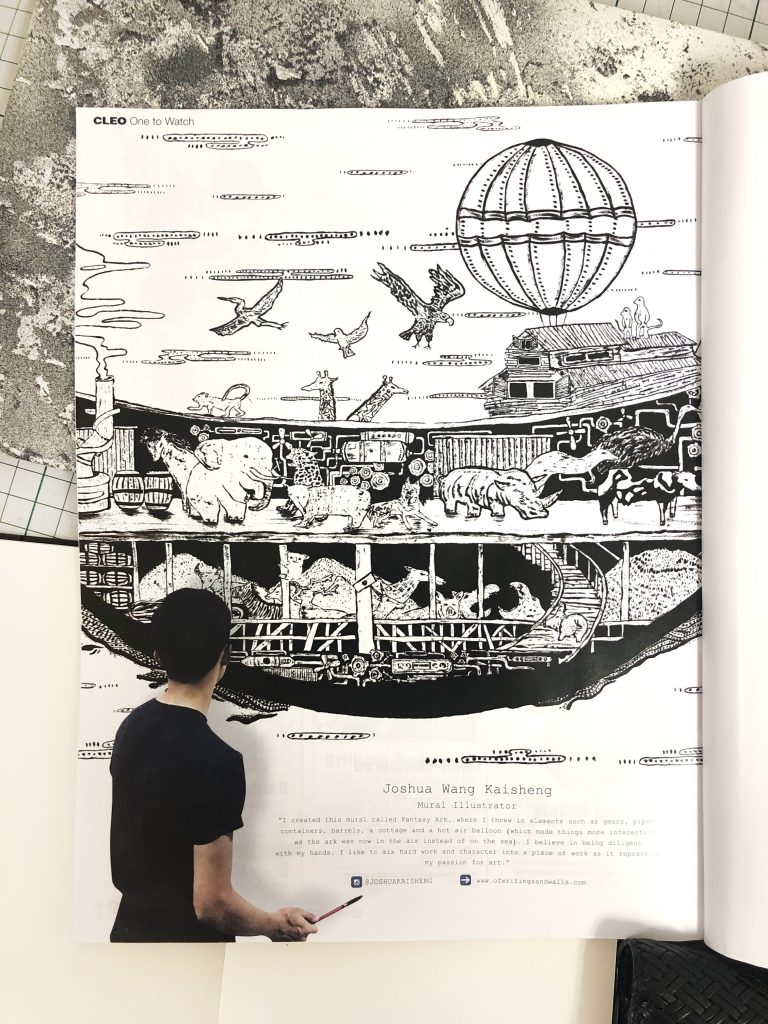
How did you find the course?
On the first day of school, I turned up with a thick, heavy Fujitsu laptop. Everybody was carrying a MacBook because designers love Apple. I was the only one using Windows and I felt out of place. It was a very steep learning curve. Just learning the design programs alone, like Photoshop and Illustrator, was really tough. The other students had already picked these up long ago. To catch up, I used to stay awake until 4 AM or 5 AM trying to learn basic tools, and then I would wake at 7 AM or 8 AM and rush to school.
How incredibly brave of you!
I guess I was brave, or at least, brave enough! I also had great cohort mates.
After the steep learning curve, did things get easier for you?
No, things didn’t get any easier. A lot of things were happening in my family. I had taken a bank loan to study and I was tired physically, mentally, and emotionally.
There was a point, in my second year of university (right after the Scotland trip) when everything was great. And then things suddenly took a turn, and so I dropped out to work part-time and earn some extra cash to support my family. I was still loving the design and so a lot of people kept asking: “What happened? Why don’t you want to continue? It’s only one year to graduation.”
I was struggling inside, and close to depression. I had a lot of emotions bottled up, but I didn’t want to bother my mom about them. She had enough on her shoulders, and I wanted to be the child that could support her. Things got better after a while, though. I got my first official job as a graphic designer, and my design journey started from there.
How did you get the graphic design job?
I started working for my cousin’s company, which did prints for beauty brands, supermarket collateral, and so on. Things like pull-up banners and brochures. I mostly did a lot of headboards, graphics, stock photos, and vectors. I had creative freedom and I liked my colleagues.
I did this for about 18 months. The working hours were crazy and I remember working until midnight most days. We used to joke among ourselves that the last time you saw the sun was in the morning before you stepped into the office. Lunch and dinner were always at your desk and my office had no windows, which was pretty depressing!
After a while, I decided to freelance and also get back into painting, which I love. So I started to paint murals – I painted my friend’s house and took any projects pro bono on my free days. I really enjoyed it.
You finally got some sun! And how did you find freelancing?
I found it very unstable. The thing about freelancing is that you have to arrange your own time and I wasn’t a very disciplined person. I was also pretty passive. I thought I had escaped working into the wee hours, but now I found myself doing the same thing because I spent a lot of the daytime procrastinating and contemplating. I think I need the 8-5 life! However, I was doing projects that made me genuinely happy during that period, and I was painting and picking projects I wanted to work on. So, I did enjoy that freedom, but the projects weren’t stable. I decided to get another full-time job.
What happened when you decided to go back to the 8-5 life?
My UX career took flight! I got referred by a friend to an agency called Delphi Digital. I joined as a digital designer without any UX/UI background. When the interviewer asked me what my favourite website was, I told him it was Yahoo because it was the only website I knew. Somehow I got recruited, and I am so thankful that my boss took a chance on me. I learned so much.
Could you share a bit more about what you learned? Does anything stand out?
I learned that soft skills are really important, not just creating beautiful designs. I had a mentor who said to me: “Josh if you can’t bring your designs to life during your presentation, that design is dead.” So I learned how to present, and I learned how to engage with my audience. I conquered my fear of public speaking.
Before, I couldn’t look people in the eyes. My mentor noticed this, and suggested I look at the tip of people’s noses! This makes it appear to people that you are looking into their eyes. I learned so many soft skills around collaboration, presentation, and some stakeholder management. These were a few of the things that shaped me as a designer in my early career.
How long did you stay on as a designer there?
About a year, and then I got promoted. I took on a leadership role, managing a team of three to four designers. I was brought into bigger projects and took on proposal writing. I got to work with a lot of business development people which took me beyond pure design. It became more about design as a way of solving a business problem and how to link design to tech and teams. I was there for three years and then the agency got acquired by Ernst and Young (EY), one of the ‘big four’.
We become more corporate. Although being part of the big four felt glamorous, we were still doing pretty much the same thing, just working on bigger projects. I took on much more stakeholder management, like facilitating KPI workshops, discovery, requirements gathering, talking to internal stakeholders, focus groups to find out their business problems…and then after that, going back to the design team, brainstorming and analyzing solutions.
You mentioned the relationship that you were discovering between design and tech. What did you mean by that?
The most important thing you can do as a UX designer is to learn how to leverage relationships with the people that are around you. UX designers work very closely with developers, and developers think in a very logical fashion. Designers are visionaries, artistic, and sometimes pretty abstract. We think in pictorial format. Developers think in terms of logic, which is how they write code and so on.
One of my closest colleagues was a front-end developer who I still work with. He said this to me: “Josh, whatever design you come up with is possible for us on the tech side. The success of it lies in how you communicate with us. You need to be able to onboard us at an incredibly early stage.” And so even though I didn’t know HTML or CSS or programming languages like Python, I would hop into their meetings and listen to the way developers communicate.
I learned that UX is a team sport. No one can really succeed working in silos. Even though I work in the design lane I need to peek over at the dev lane. I need to let them know what we’re working on, not wait and give them a ‘tada!’ moment. Learning to work better alongside colleagues makes a big difference, and this is where you marinate design with tech.
Going back to your career at Ernst and Young… It sounded like you were on a really interesting learning curve. What happened to make you leave?
I loved my job a lot at EY. I thought about it day and night. Maybe that sounds cliche! However, when Singapore went into lockdown (COVID-19) and I started working from home, I found there was no cut-off point. It became impossible not to think about work because I never left the ‘office’. My laptop was always within reach. I was constantly working, and even though I was enjoying it, there came a point when I developed insomnia. I couldn’t fall asleep because I was so excited about work. It wasn’t healthy for my body.
So I spoke to my wife, and we concluded that there will never be a perfect time to start our own company and to explore our ideas. After this, I wrote my resignation letter and sent it to my boss. My bosses asked me if I was crazy! Even though they told me the job market was bad, I decided I wanted to start something on my own.
Wow! What did you start?
I’m a toy collector, so I decided to start my own toy collector company. I took a few months to do that and spent time liaising with 3D artists, graphic designers, suppliers, and photographers (to do product shoots). It was so interesting!
It was my dream to create toys that have a ‘voice’. These aren’t just any toys that sit on your shelf. These toys have metaphors. For example, we have a toy that is a dinosaur that ‘speaks’ for humanity. Even though dinosaurs are extinct, this toy encourages humans to be nice to one another and not let kindness go extinct.
That was pretty fun, and even with no income coming in it felt exciting and fulfilling. It’s on hold right now because our manufacturer in China shut down and went missing, but we have the prototypes all ready to go.
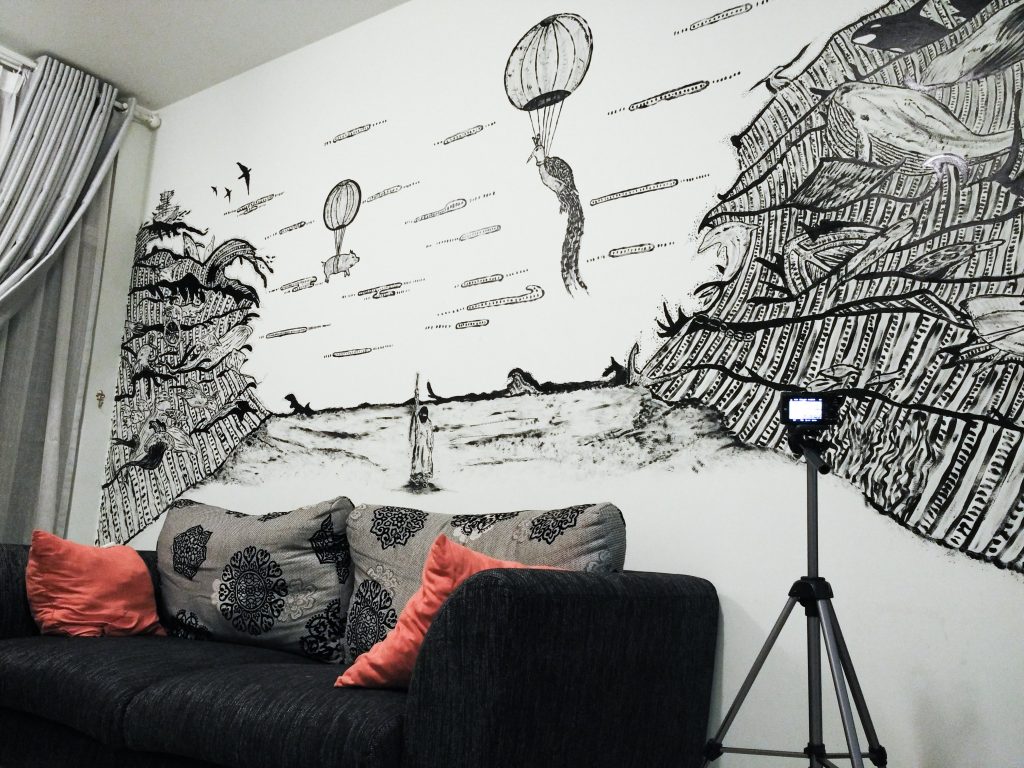
What did you decide to do when you couldn’t get a manufacturer for your business?
I started running some UX boot camps after I left Ernst and Young, and I fell in love with talking to people, facilitating, and imparting knowledge. I then saw a role doing exactly this at Skills Union and I decided to give it a try. The funny thing is that General Assembly approached me at the same time and had the same role for me. Even though General Assembly is huge, my conversation with Skills Union CEO Colin influenced my decision. There was something about the company that drew me in.
My conversation with Colin was really special. He talked about nurturing the next generation and creating a platform and safe space for people to learn in, and push through failure. I resonated with that because my background in design was pretty tough and quite unconventional. People didn’t trust me and others doubted me. I resonated with the Skills Union cause and I decided to join them in February 2021.
How have you found yourself being a UX instructor?
Whenever I go to class, I still have butterflies in my stomach! But I have found I shine through in-person catch-ups and being with my students. I tell them that I want to be more than an instructor – I want to work alongside them.
Another reason I joined Skills Union was to expand my social circle because I realized as you grew older your social circle starts shrinking. I find it really cool to talk to people from different industries (my students). They include cabin crew, and people from pharmaceuticals, and in my recent cohort, I taught a chef turned UX designer! My philosophy is to treat students not just as learners, but as friends. I think this is something my mentor taught me. He told me a good leader is someone willing to get his hands dirty. So, I go down to the student’s level, and spend extra time with them, even on weekends. It doesn’t feel like work.
You’ve worked in the UX industry for a long time, and you’re plugged into the industry and what they’re looking for. Can you share what job options are available for students after graduation?
There are a few career options. One is a UX designer, another is a UX/UI designer. You can also become a UX researcher. If you go the management route there are roles like UX strategists, UX managers, and product managers, where you oversee the vision of a particular product.
Every student I teach is different. Some have marketing backgrounds, some come from sales. We customize their portfolio to fit the role they are looking to take up after graduation. For instance, if they want to become a UX researcher, we steer them in the direction of research and analysis, covering things like developing problem statements, methodologies, creative hypotheses, and so on.
I know it’s competitive out there, but I believe there are enough roles for everyone. I always tell my students that if they’re willing to put in the hard work, we will make sure they land their dream job.
What do you think is your key skill or talent that has enabled you to persevere through really tough challenges to become successful? Many other people would have given up early on.
I wouldn’t say I’m a very talented person! But if I had to pinpoint one strength, I think it is my tactfulness. I have learned to be slow to speak and quicker to listen. My wife told me that I used to listen to respond, not listen to understand, and so I changed. I’ve seen this happen in the workplace, too. Sometimes we are quick to point fingers and avoid assuming responsibility.
My mentor in my church told me that maturity doesn’t come with age, but with the assumption of responsibility. So, once you have accepted the responsibility, it doesn’t matter what age you are. I come from a single-parent family, and it meant I assumed responsibility from a young age.
How has this perspective influenced how you teach your students now?
I always tell my students in the UXPM program that no matter how lousy they are, I will find the good in them. I believe that there is always something good in people and I have developed faith in humanity. Overall, it’s not just about becoming a better developer, better designer, or better project manager. It’s about becoming a better person. I believe that there is always a ‘why’ before the ‘how’. This is how I craft human-centred designs for problems and make sure they contribute to a bigger ecosystem.
Finally, what is your piece of advice or top tip to someone trying to decide on a new career or further study?
I tell students that it is always very scary to step into the unknown. But if you know you’re unhappy, and constantly dragging your feet to work, it’s worth it. It takes courage to quit because once you quit, there’s no more salary coming in. There are a lot of uncertainties, and we all know that job searching takes time. Going to interviews again, and perhaps experiencing failure, is hard. But if you tell yourself that you will be in a better place once you get through it, it will be worth it.
I’ve known friends who choose to stay unhappy, constantly working until 2 AM or 3 AM in the banking industry. When I ask them if they’re unhappy, they say: “I hate my job and I wear a fake smile when I’m talking to my clients. Every day is the same.” They have five-figure paychecks. If they are willing to deal with that, that’s a decision they make and I respect it. However, if you choose to put a full stop to all of that then you need to embrace your fear of the unknown.
Nelson Mandela once said that courage is not the absence of fear, but the triumph over it. For anyone seeking life or career change, I say that the road is going to get tough, but it doesn’t matter if you feel constant fear. You are taking a risk to create a new life, and it will be worth it.
